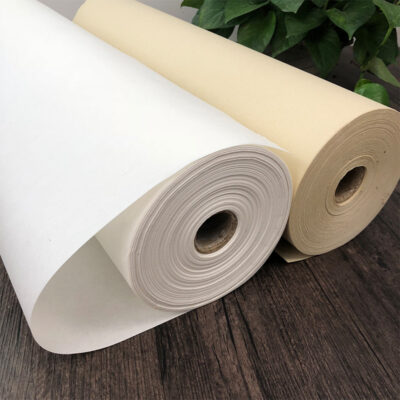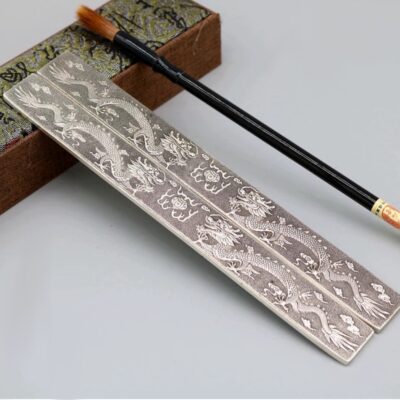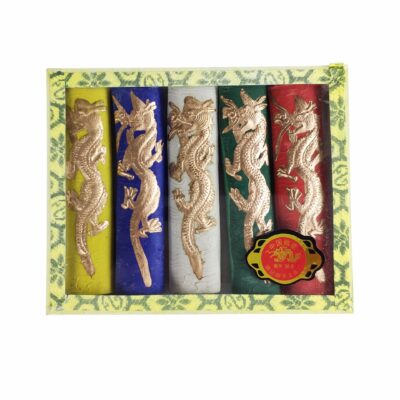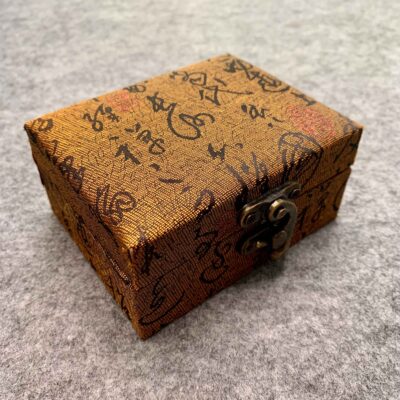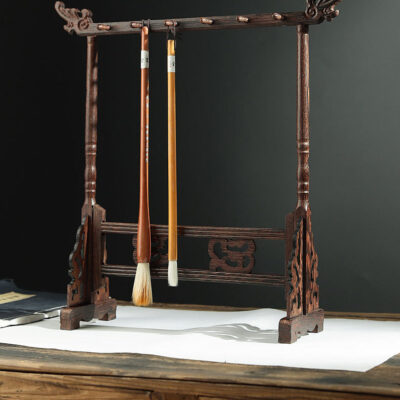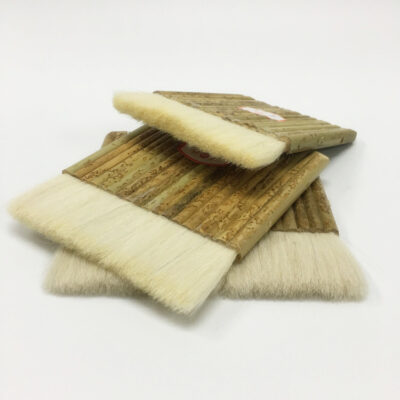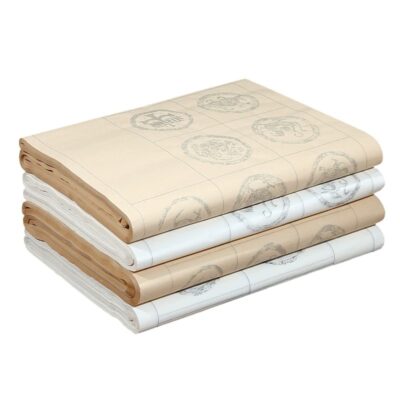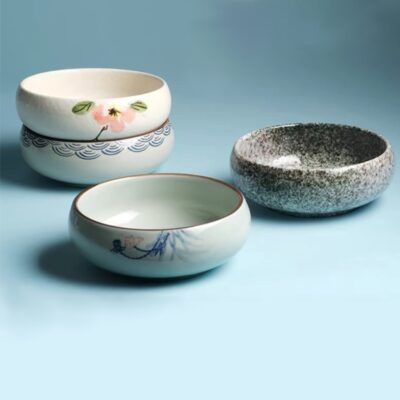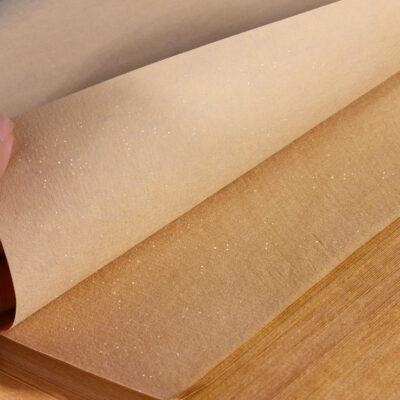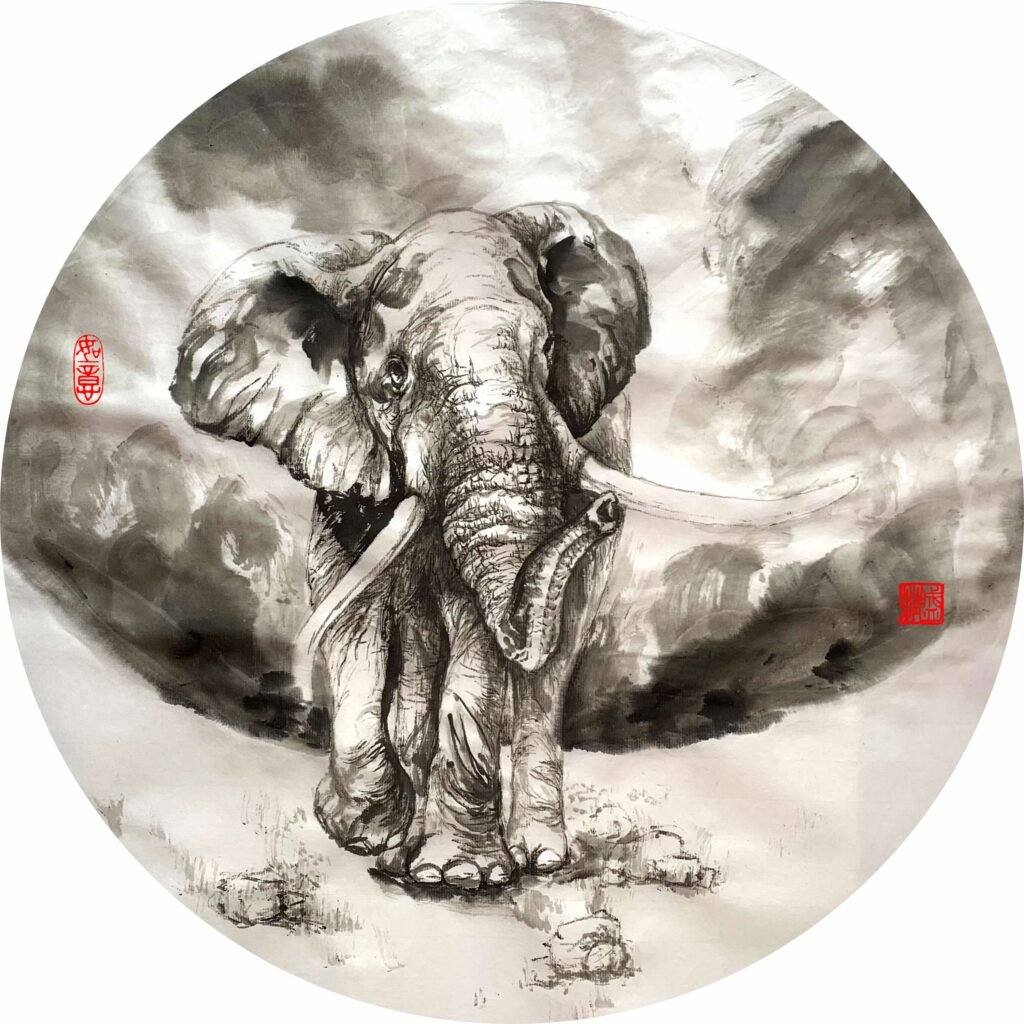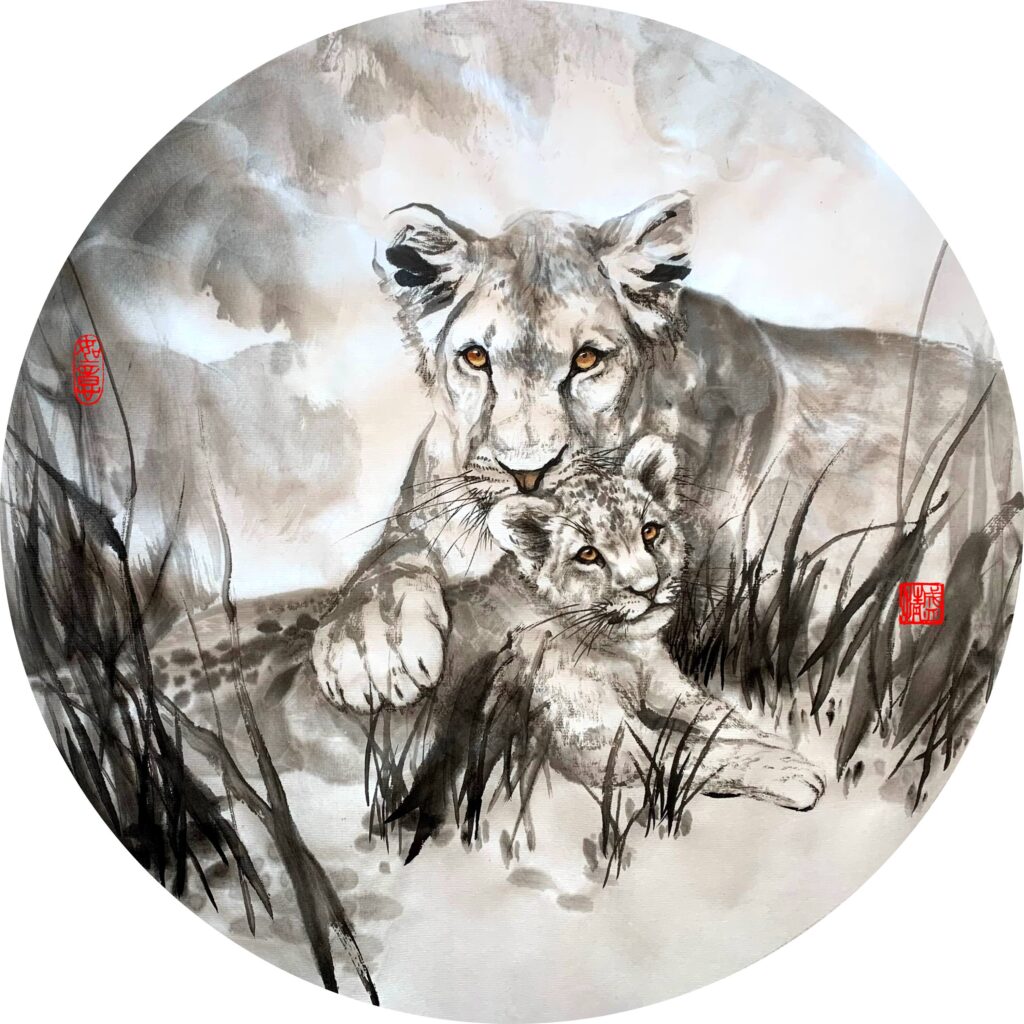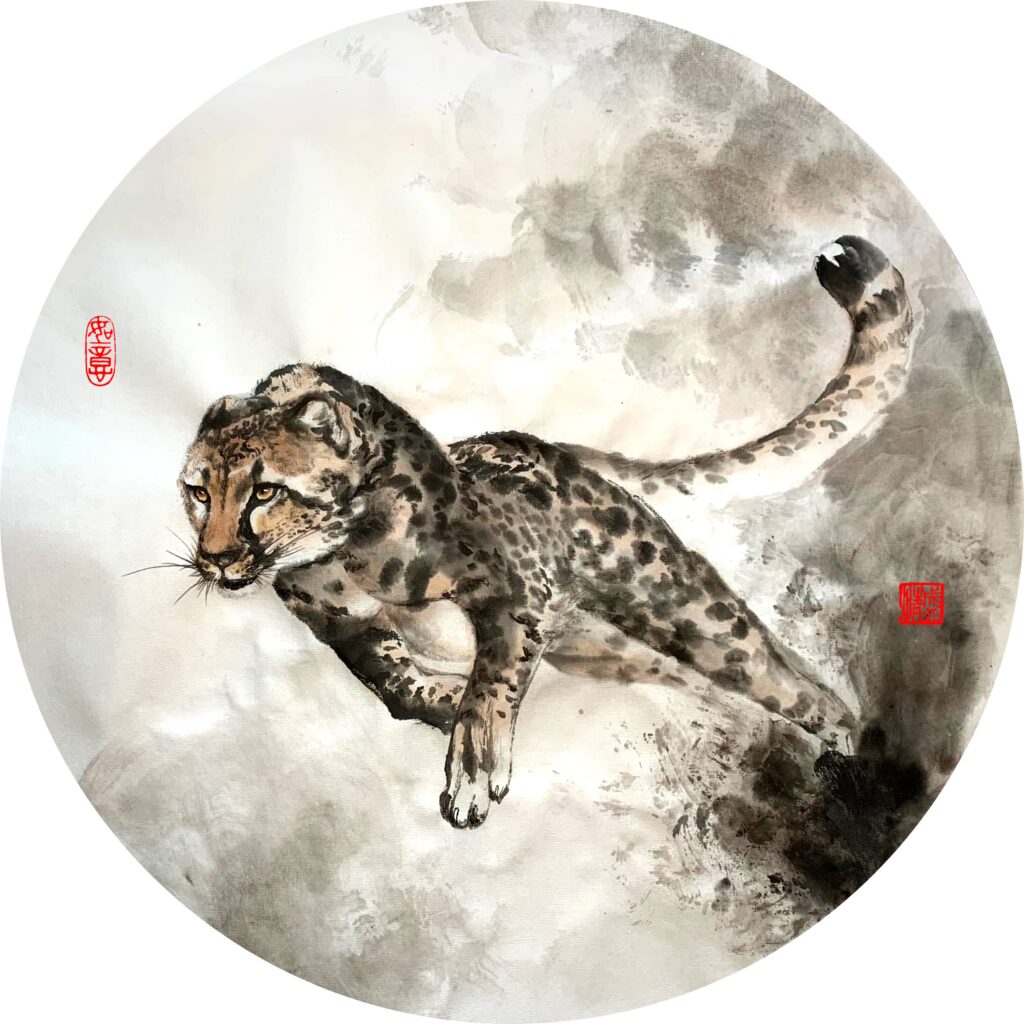The painting brush, ink, Xuan rice paper and ink stone together are called the Four Treasures of the Scholar’s Chamber. These are clearly the most essential tools that facilitate our artistic creation since ancient time, and their maintenance has to be discussed. These art supplies can be quite expensive, however, they could accompany us for many years to come if kept right. So today, let us focus on how to keep each nicely!

Brush
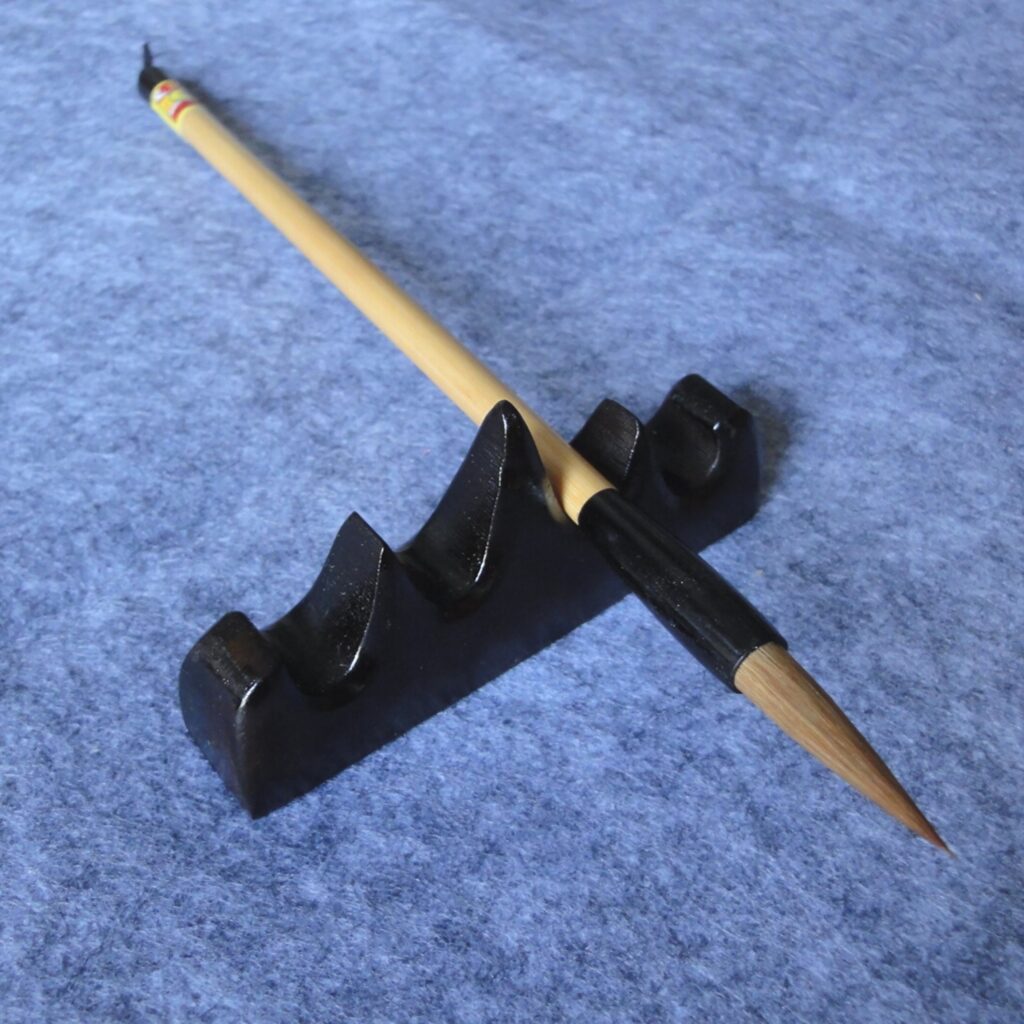
A brush has to undergo many complicated processes in order to be made. A nice brush requires carefully selection of the hair and other related materials, and the skills of a competent craftsman. You can read more about the making of a brush (1) and (2). It is very normal to loose a few hairs when you use a new brush, as a handmade brush cannot have all the hair bound to its root, but if your brush looses many hair all the time, then either this was a bad brush or you have not used or kept it right. The maintenance of a brush is much easier in comparison to its making, but it requires habit formation.
Once a brush is open and used (if you need help please check the video below), the most important thing to remember is to clean and dry it correctly.
- Clear water is the only thing necessary to clean a brush, and you can always make circular movements in the water container or hold it under running water to rinse off the residual ink. Do not use any chemical (soap or other cleaning products) on the brush. Remember the brush is made from animal hair, it is similar to our hair, but the difference is that our hair can grow new ones, while the brush hairs cannot regenerate, and the amount of fat on each hair is essential to its function;
- Pay attention to the brush root when cleaning, you may never clean the roots totally without forcing it into the sink (please do not do so), but sufficient rinsing will do;
- After rinsing the brush rather clean (there is almost no color or ink that comes off the brush anymore), you can gently squeeze the brush hair to remove the extra water or use paper (I prefer kitchen paper that does not shed lint) to absorb the excess dripping water, return the tip of the brush to its central state before hanging it vertically to dry. If you do not have a hanger, placing it flat on the desk is also fine. The key is to make sure the brush dries thoroughly after each use before storing it away in a brush wrap
- Never dry your brush with its hair pointing upwards in a pen holder, this is the worst that can happen to a brush
Attention: If the brush dried with its tip not in the center, it will be rather difficult to use the next time. Simply soaking it in water will not help, only after hours of use perhaps the tip will return to its original state. If the brushes do not have the opportunity to dry consistently, there is a high chance of the root rotting, the result will be many hair falling out all the time, and your brush will loose all its strength – this is an irreversible state.
Do not be worried about your brush though, once you have the habit of rinsing the brush and drying it well, your brush can accompany you for many many years. The weasel hair brushes will loose its sharpness first after some time of use, but then you can always use it for a different purpose or paint other things that require such tips, so it will live on.
Ink

The ink is much easier to maintain. We have another post talking about the making of the ink, if you would like to find out more about them, you can read it here.
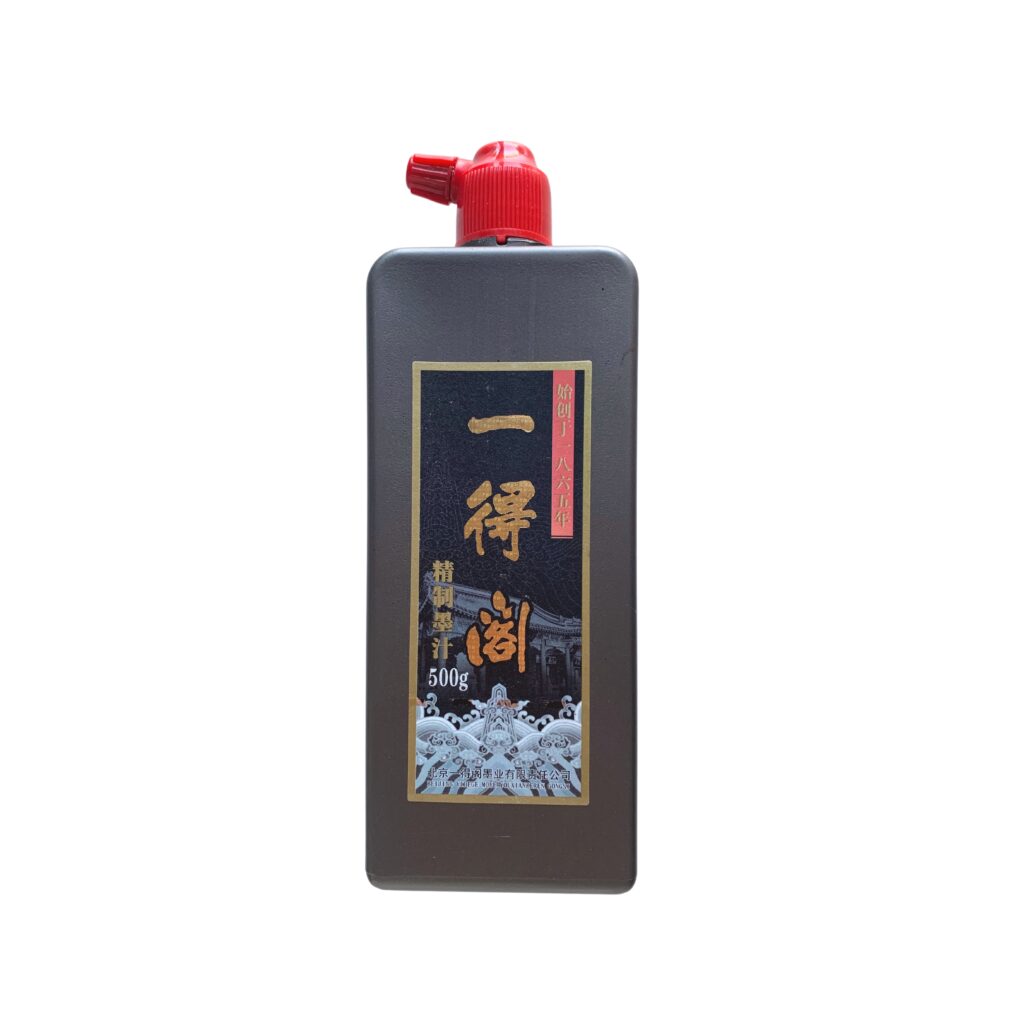
When it comes to the liquid ink, the only thing you need to remember is to keep the cap closed when you are finished using it. This helps the ink stay fresh, it also limits the chance of “accidents” in your study – if you use ink to paint or do calligraphy, you will discover sooner or later that a tall water container shall never be used, and ink bottles need to stay a certain distance away from your papers or clothes – not all accidents are happy ones.
Ink sticks are also rather easy to store, keep them away from direct exposure to the sun and you are going to be alright. When using, remember to remove it after grinding over the ink stone, otherwise the ink stick and the ink stone both will suffer. Never soak your ink sticks in water either, it is just a very painful waste of money and craftsmanship.
Attention: Another ink using hygiene is try to use only fresh ink, whether it is ground ink or liquid ink from the bottle. Old ink may not always smell bad (it can be though), but old ink is usually not ideal to use for the art creation. In the mounting of an art piece, old ink have a higher tendency of “escaping” from its original place and leak out. This will create unwanted trouble for you, or it can ruin your entire artwork that you have spent hours or days working on. Another issue that arise from old ink is that once the ink dries up, there are chunks of solidified ink that can even hurt your brushes. I am against waste in fact, so my solution is to use old ink with old brushes, for practice or something, if necessary. However, the better solution I believe is to always grind a smaller amount of ink at a time, the same goes for pouring ink from a bottle. Nowadays the bottles are quite well made, and you can always rely on it to add only a few drops of ink at a time.
In the next post we will continue our discussion – hope that you pay attention to your beloved art supplies, so that they can help you create nice artworks one after another!
Enjoy such cultural discussions? Have comments? I look forward to hearing from you!
Buy Artworks | Learn Brush Painting | Learn Chinese Calligraphy
